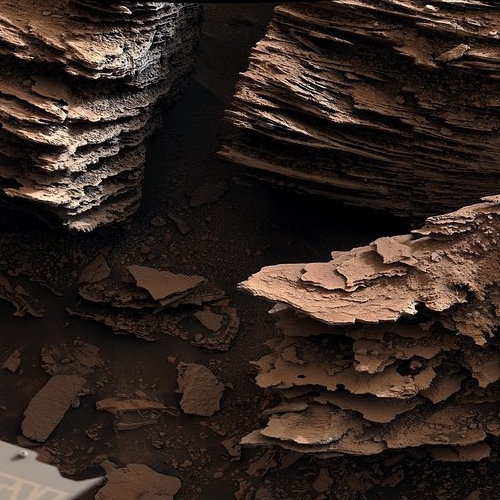NASA now targeting late August launch of SLS
NASA officials today confirmed that they are satisfied with the results from this week’s incomplete dress rehearsal countdown of the SLS rocket, and are targeting a late August launch of SLS.
NASA officials have reviewed the data collected during the test run and decided that a leaky hydrogen valve was not significant enough to force a delay in the launch of Artemis I, an uncrewed mission planning to orbit the moon and return to Earth. It’s the first step toward putting humans back on the moon for the first time since Apollo 17 in 1972.
“The team is now ready to take the next step and prepare for launch,” said NASA’s deputy associate administrator Tom Whitmeyer.
NASA officials said they will roll the massive Space Launch System rocket back to the Vehicle Assembly Building, where the valve’s faulty seal will be replaced. Rollback is slated for Friday July 1, though weather concerns could push that back.
SLS won the five-plus year race with the Webb telescope on which would have the most delays and launch last. Now the race will be between SLS and SpaceX’s Starship/Superheavy. Which will launch first this summer? In a rational world, SLS should win hands down. It has been in development since 2004, while Starship only began design work in 2017.
This is not a rational world, however, and SLS’s long gestation had little to do with designing a rocket and everything to do with politics and a corrupt Congress and an incompetent NASA. The rocket that has come out of this is thus difficult to operate and incredibly cumbersome. Its components have also not been tested thoroughly.
SpaceX meanwhile has been designing and building its heavy-lift rocket with only one goal: the rocket must be efficient to operate.
I predict Starship will reach orbit first, though if it doesn’t it most likely will be because SpaceX finds it needs to do more ground tests and revisions, not because SLS has surged ahead. And regardless, Starship will likely fly many times in the next three years, while SLS will only get off the ground once.
More important, the chances of SLS and Orion working perfectly throughout that that lunar orbit mission seem almost impossible, based on track record during the past eighteen years of both programs. Expect some issues to crop up, first during the launch countdown, forcing several scrubs, and then during the mission itself. None might be mortal, but all will raise questions whether it would be wise to put humans on this rocket and capsule on its next flight, and attempt to take them to the Moon.
NASA officials today confirmed that they are satisfied with the results from this week’s incomplete dress rehearsal countdown of the SLS rocket, and are targeting a late August launch of SLS.
NASA officials have reviewed the data collected during the test run and decided that a leaky hydrogen valve was not significant enough to force a delay in the launch of Artemis I, an uncrewed mission planning to orbit the moon and return to Earth. It’s the first step toward putting humans back on the moon for the first time since Apollo 17 in 1972.
“The team is now ready to take the next step and prepare for launch,” said NASA’s deputy associate administrator Tom Whitmeyer.
NASA officials said they will roll the massive Space Launch System rocket back to the Vehicle Assembly Building, where the valve’s faulty seal will be replaced. Rollback is slated for Friday July 1, though weather concerns could push that back.
SLS won the five-plus year race with the Webb telescope on which would have the most delays and launch last. Now the race will be between SLS and SpaceX’s Starship/Superheavy. Which will launch first this summer? In a rational world, SLS should win hands down. It has been in development since 2004, while Starship only began design work in 2017.
This is not a rational world, however, and SLS’s long gestation had little to do with designing a rocket and everything to do with politics and a corrupt Congress and an incompetent NASA. The rocket that has come out of this is thus difficult to operate and incredibly cumbersome. Its components have also not been tested thoroughly.
SpaceX meanwhile has been designing and building its heavy-lift rocket with only one goal: the rocket must be efficient to operate.
I predict Starship will reach orbit first, though if it doesn’t it most likely will be because SpaceX finds it needs to do more ground tests and revisions, not because SLS has surged ahead. And regardless, Starship will likely fly many times in the next three years, while SLS will only get off the ground once.
More important, the chances of SLS and Orion working perfectly throughout that that lunar orbit mission seem almost impossible, based on track record during the past eighteen years of both programs. Expect some issues to crop up, first during the launch countdown, forcing several scrubs, and then during the mission itself. None might be mortal, but all will raise questions whether it would be wise to put humans on this rocket and capsule on its next flight, and attempt to take them to the Moon.


















